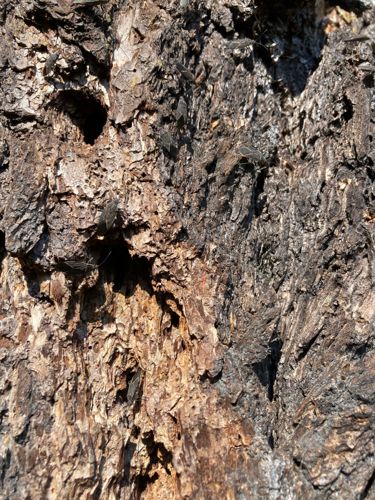Stonefly (Adult)
Scientific Name: Order Plecoptera
Order & Family: Order: Plecoptera, Family: Various (e.g., Perlidae, Nemouridae)
Size: Typically 0.2 to 2 inches (5 to 50 mm) in length, depending on the species.

Natural Habitat
Adults are typically found near well-oxygenated freshwater sources like streams, rivers, and lakes, often resting on riparian vegetation or tree bark (as seen in the image). Larvae (nymphs) are aquatic.
Diet & Feeding
Adult stoneflies often have reduced mouthparts and either feed little or not at all, subsisting on stored reserves. Some species may consume algae or detritus. Aquatic nymphs are more diverse, feeding on algae, detritus, or other small invertebrates.
Behavior Patterns
Stoneflies are known for their sensitivity to water quality, making them important bioindicators. Adults are generally short-lived, emerging from the water to mate and lay eggs. They are not strong flyers and often remain close to their emergence sites. Many species emerge in cooler months.
Risks & Benefits
Stoneflies are critical components of freshwater ecosystems. Their nymphs are a significant food source for fish and other aquatic predators, and adults are prey for birds and bats. As indicators of good water quality, their presence is beneficial. They pose no direct risks to humans.
Identified on: 9/24/2025